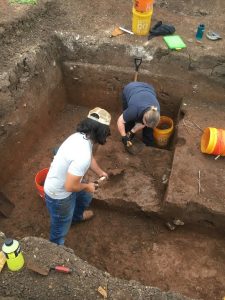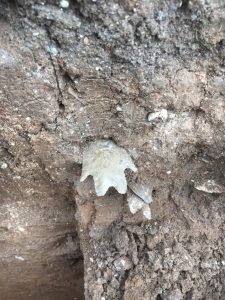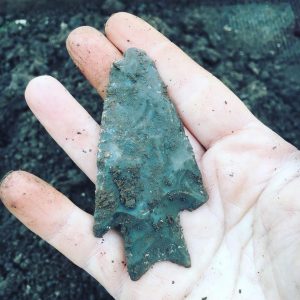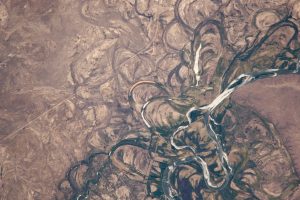Archaeology Update for the Week of March 13
Hello out there from beautiful New Braunfels! While it started out as a prett
y damp little Wednesday here, the sun is out now and it’s absolutely gorgeous Spring-is-almo
st-here weather outside! Perfect for all those folks visiting for South-by… Not too bad for the Headwaters Excavation Crew either!
Block A has hit what we think is an old stream channel
Throughout Block A, those pesky gravels we’ve been talking about in the past few weeks now cover pretty-much all of Block A between 1.3 and 1.5 meters below the surface (that’s roughly 4.5-5.0 feet). The excavators hypothesize all of this gravel is an old waterway channel that flowed in this spot some time before the Middle Archaic Period and meandered elsewhere over the centuries. We aren’t too sure which waterway it would eventually become, but maybe we can coax some of that information out with a bit more investigations. Maybe. Tune in to tomorrow’s Live Update (OUR LAST ONE for a while!) at 10 AM Central Time on YouTube to see Block A in all its gravel-ey glory!
We ten
d to think of waterways like creeks and rivers as fairly stationary, but in reality, many of them move around a lot over time. Either gradually as the flow of water slowly scours away the soil and rock on one bank and re-deposits that material on the other, or more abruptly through a strong flood, rivers and creeks are pretty… ahem… fluid (yes, a pun. I really hope it doesn’t erode your opinion of me!). Anyway, several years back, some nautical archaeologists (myself included!) worked on an 1830s western river steamboat shipwreck on the Red River up in Oklahoma called Heroine. This wreck had been buried under sand for almost 200 years and then one day, after a particularly heavy flood, someone walked out along the bank and saw the remnants of a ship just sitting there! So moving waterways make up a big component of archaeology (in more ways than one!).
This is a pretty neat picture I found on Wikipedia of the Negro River in Patagonia (that’s in South America). You can see all of the scars on the land of what look like dozens and dozens of earlier waterways. We may be seeing the same thing at the base of Block A, just not quite as pronounced.From the deep exploratory trench the crew dug a couple weeks ago, we’re pretty confident the gravel we’re seeing at the bottom of Block A keeps going at least another 4-5 feet. That likely means that we’ve hit the proverbial “bottom” of Block A. People often ask, “How do you know when to stop digging?” Well, this is a perfect example of the archaeological equivalent of this.
Lots of Pedernales in Block C
Over in Block C, the crew had a really interesting find this week sticking out of the excavation block walls!

The crews are digging away in Block C now that Block A is pretty-much at the bottom.
You can see in this picture below, two dart points sticking out of the excavation block wall with a flake sandwiched between them. There are some aspects of this find that are noteworthy: 1) the points are found really close to one another, meaning they were probably deposited at the same time; 2) they’re both the same point type and therefore are likely contemporaries (Pedernales dart points – the split stem (the part that’s closest to the thrower) is a tell-tale indicator of this point type – roughly 2,000-3,000 years old); and 3) they’re both facing the same direction. That might suggest some kind of intentional placement (I stress “might”, though, because it could just be coincidence). In addition to these two Pedernales points, another one was found right nearby at the same general depth. Clearly there was a Pedernales occupation at the site! Pedernales points like these are among the more common point types found in central Texas, so finding a lot of them here does not come as a big surprise. Finding so many in one place, on the other hand, is definitely more noteworthy.


Here’s another Pedernales point that was recovered from the same area of Block A. You can see the tell-tale split stem (the part of the point closest to the bottom of the picture; that’s the part that would have been hafted on a stick).
We’re Winding Down our Updates as the Excavation Winds Down
We’ve made a few hints over the past couple weeks that we are going to be slowing down on the regular updates as our excavations round the final bend or two toward wrapping up. We have a lot of work to do once the fieldwork is complete and we do plan to keep you updated on progress as we go. It just won’t necessarily be quite as frequent. We wanted to thank you all for your interest in this site and in Texas archaeology and history. It’s been a lot of fun bringing some of the finds to you and having so many of you coming out to visit.
We’ll be back with another update soon!





